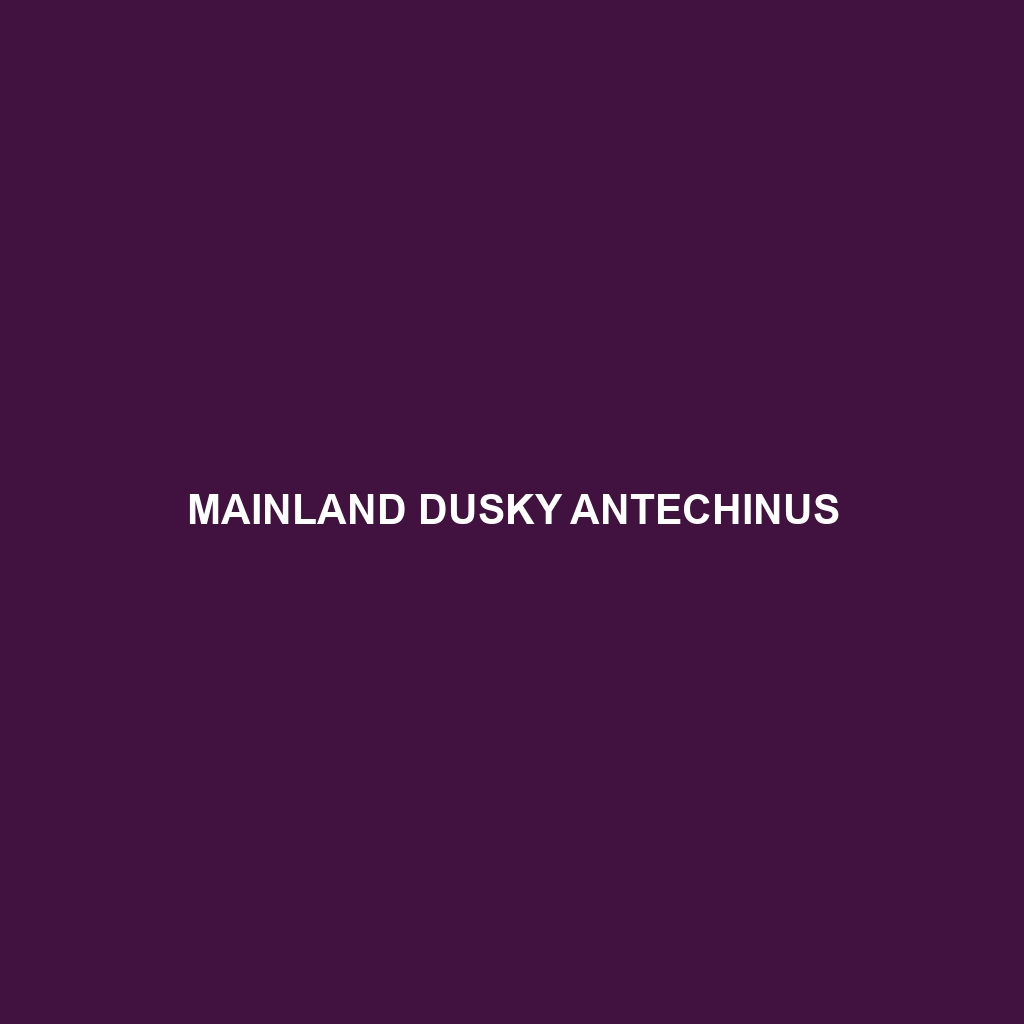Mainland Dusky Antechinus: Detailed Description
The Mainland Dusky Antechinus (Antechinus swainsonii) is a small, nocturnal marsupial native to the forests and woodlands of eastern Australia. Known for its distinctive dark fur and high-energy lifestyle, this fascinating creature plays a crucial role in its ecosystem through its predation on insects and small vertebrates. Despite its small size, the Mainland Dusky Antechinus is renowned for its ferocious hunting tactics and unique reproductive behaviors.
Physical Characteristics
Size: Adult Mainland Dusky Antechinuses typically measure between 12 to 16 centimeters (4.7 to 6.3 inches) in body length, with an additional tail length of 8 to 11 centimeters (3.1 to 4.3 inches). They weigh between 30 to 90 grams (1.1 to 3.2 ounces), with males generally larger than females.
Coloration: As their name suggests, Mainland Dusky Antechinuses have a dusky or dark brown fur, which can vary from almost black to lighter brown shades. Their underbellies are usually lighter in color, often a creamy or greyish tone.
Special Features: These antechinuses have sharp, pointed snouts and large, rounded ears. Their eyes are relatively large, aiding their nocturnal lifestyle. They possess a prehensile tail, which helps them navigate their arboreal habitats with agility.
Behaviors
Social Interactions: The Mainland Dusky Antechinus is generally solitary, except during the breeding season. Males are particularly territorial and engage in aggressive behaviors to establish dominance.
Feeding Habits: This species is primarily insectivorous, preying on insects, spiders, and other invertebrates. They are also known to consume small vertebrates, including lizards and birds. Their foraging activities are most intense during the night.
Reproductive Behavior: The Mainland Dusky Antechinus has one of the most remarkable reproductive strategies in the animal kingdom. Males undergo a period of intense mating activity, often leading to their death due to stress and exhaustion. This phenomenon, known as “semelparity,” results in a high turnover of the male population each breeding season.
Habitat and Adaptations
Habitats: This species inhabits a variety of forested environments, including temperate rainforests, wet sclerophyll forests, and coastal heathlands. They prefer areas with dense ground cover and abundant leaf litter.
Adaptations: The Mainland Dusky Antechinus is well-adapted to its environment with sharp claws and a prehensile tail for climbing. Their dark fur provides camouflage against the forest floor, and their keen sense of smell aids in locating prey. Additionally, their ability to enter torpor, a state of reduced metabolic rate, helps them conserve energy during periods of food scarcity.
Ecological Role
The Mainland Dusky Antechinus plays a vital role in controlling insect populations, thus maintaining the ecological balance within their habitats. Their predation on small vertebrates also helps regulate the populations of these species.
Conservation Status
Currently, the Mainland Dusky Antechinus is not listed as endangered. However, habitat destruction and fragmentation pose significant threats to their populations. Conservation efforts focus on preserving their natural habitats and monitoring population trends to ensure their long-term survival.
Fun Facts
The Mainland Dusky Antechinus is one of few mammals known for semelparity, where the males die shortly after an intense breeding season.
Despite their small size, these marsupials are known for their fierce hunting skills, often taking down prey as large as themselves.
They have a short lifespan, typically living for just one or two years, with females surviving slightly longer than males.
These animals are incredibly agile climbers, often seen navigating trees and dense underbrush with ease.
The Mainland Dusky Antechinus is a remarkable species, full of unique behaviors and adaptations that make it a fascinating subject of study and conservation. By understanding and protecting this small marsupial, we can help maintain the biodiversity and health of their forest ecosystems.
